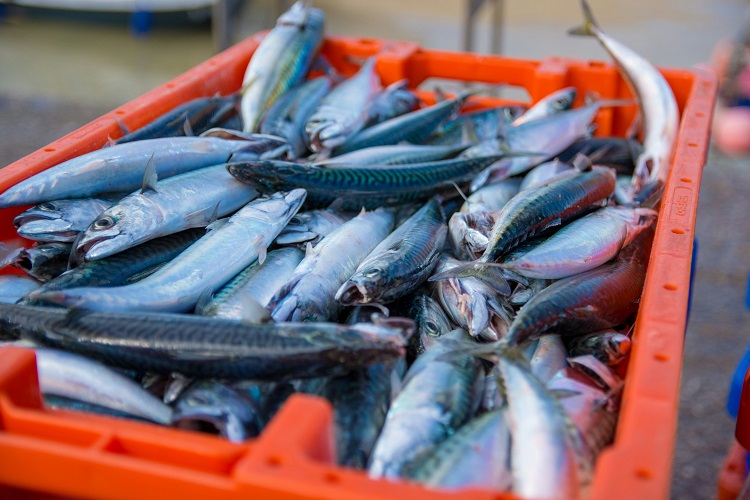Fish Farming

Type: Aquaculture/Fish Farming.
Key Products for Sale:
- Fresh Fish: Offering a variety of freshwater fish species, such as tilapia, catfish, or trout, raised in a sustainable and environmentally friendly manner.
- Processed Fish Products: Producing value-added products like fillets, smoked fish, and fish cakes to cater to different market segments and increase revenue streams.
- Fertilizer and Organic Supplements: Utilizing fish waste to produce organic fertilizer and supplements for agricultural use, tapping into the growing demand for sustainable farming practices.
- Aquaponics Systems: Designing and selling aquaponics systems that integrate fish farming with hydroponic plant cultivation, offering a complete solution for sustainable food production.
Technology Considerations:
- Automated Feeding Systems: Implementing automated feeding systems to optimize feeding schedules and minimize waste, reducing operational costs.
- Water Quality Monitoring: Utilizing sensors and monitoring systems to maintain optimal water quality parameters for fish health and growth.
- Recirculating Aquaculture Systems (RAS): Investing in RAS technology to efficiently recycle water and minimize environmental impact while maximizing fish production.
- Fish Health Management Apps: Using mobile apps to track fish health parameters, monitor feeding behavior, and manage disease prevention strategies.
Market for the Products:
- Local Consumers: Meeting the demand for fresh and locally sourced fish among consumers, including households, restaurants, and seafood markets.
- Processed Food Industry: Supplying processed fish products to food manufacturers, caterers, and retailers looking for high-quality seafood ingredients.
- Agricultural Sector: Providing organic fertilizers and supplements to farmers and agribusinesses seeking sustainable solutions for soil enrichment and crop production.
- Aquaponics Enthusiasts: Targeting hobbyists, educators, and urban farmers interested in aquaponics systems for home or educational use.
Key Inputs into the Business:
- Fish Stock: Acquiring high-quality fingerlings or juvenile fish from reputable hatcheries or breeding centers.
- Fish Feed: Sourcing nutritious and sustainable feed ingredients to meet the dietary requirements of the fish at different stages of growth.
- Water Management Systems: Investing in infrastructure for water supply, filtration, aeration, and recirculation to maintain optimal conditions for fish farming.
- Labor: Hiring skilled personnel for daily farm operations, including feeding, monitoring, maintenance, and harvesting.
Product Preparation Process:
- Fish Rearing: Rearing fish involves providing optimal conditions for growth, including proper nutrition, water quality management, and disease prevention measures.
- Harvesting and Processing: Harvesting fish at the right size and processing them into various products such as whole fish, fillets, or value-added products like smoked fish or fish cakes.
- Fertilizer Production: Processing fish waste into organic fertilizer through composting or vermicomposting, packaging it for sale to agricultural customers.
- Aquaponics Setup: Designing and setting up aquaponics systems that integrate fish farming with hydroponic plant cultivation, providing comprehensive solutions for sustainable food production.
Quality Considerations:
- Fish Health and Welfare: Ensuring proper care, nutrition, and disease management practices to promote the health and well-being of the fish.
- Product Quality: Maintaining high standards of hygiene and sanitation throughout the production process to deliver safe and wholesome fish products.
- Environmental Sustainability: Implementing eco-friendly practices to minimize environmental impact, conserve natural resources, and promote sustainable aquaculture practices.
Cost of Investment:
- Land Acquisition or Lease:
What to Purchase: Land suitable for fish farming operations, including space for ponds, infrastructure, and potential expansion.
Estimated Cost: Depending on location, quality, and size, land acquisition costs can range from KES 500,000 to KES 2,000,000 per acre. - Infrastructure Development:
What to Purchase: Construction materials and labor for building fish ponds, tanks, water management systems, processing facilities, and storage units.
Estimated Cost: Construction costs can vary widely based on the scale and complexity of infrastructure. Budgeting between KES 1,000,000 to KES 5,000,000 for infrastructure development is common. - Fish Stock:
What to Purchase: Fingerlings or juvenile fish from hatcheries or suppliers.
Estimated Cost: Depending on the species, size, and quantity of fish needed, costs can range from KES 100,000 to KES 500,000 or more. - Fish Feed:
What to Purchase: Nutritious feed suitable for the chosen fish species, including pellets, flakes, or formulated feeds.
Estimated Cost: Feed costs can vary based on the size of the fish, feeding rates, and nutritional requirements. Budgeting between KES 50,000 to KES 200,000 per month for feed expenses is typical. - Water Management Systems:
What to Purchase: Pumps, filters, aeration systems, pipes, and fittings for water supply, circulation, and filtration.
Estimated Cost: Depending on the size of the farm and water requirements, costs for water management systems can range from KES 100,000 to KES 500,000 or more. - Labor:
What to Purchase: Hiring skilled personnel for daily farm operations, including feeding, monitoring, maintenance, and processing.
Estimated Cost: Labor costs can vary based on workforce size, skill level, and local wage rates. Budgeting between KES 50,000 to KES 200,000 per month for labor expenses is common. - Equipment and Tools:
What to Purchase: Farming equipment, tools, and supplies such as nets, harvesting equipment, aerators, water testing kits, and processing machinery.
Estimated Cost: Depending on the scale of operations and equipment quality, costs for equipment and tools can range from KES 100,000 to KES 500,000 or more. - Miscellaneous Expenses:
What to Purchase: Additional expenses such as transportation, utilities, insurance, permits, licenses, and initial stocking of supplies.
Estimated Cost: Miscellaneous expenses can vary widely based on specific needs and circumstances. Budgeting between KES 100,000 to KES 300,000 for miscellaneous expenses is advisable.
Potential Sources of Investment Capital:
- Personal Savings: Self-funding the business with personal savings or assets.
- Agricultural Loans: Securing loans from financial institutions specializing in agriculture or aquaculture financing.
- Government Grants: Exploring grants and subsidies available for aquaculture, sustainable agriculture, or rural development initiatives.
- Venture Capital: Seeking investment from private investors or venture capital firms interested in sustainable food production ventures.
- Crowdfunding: Raising funds through online platforms by pitching the business idea to potential backers and investors.
Requirements for Effective Management:
- Aquaculture Expertise: Hiring experienced aquaculturists, biologists, and fish health specialists with knowledge of fish farming practices.
- Business Management Skills: Developing skills in financial management, marketing, and strategic planning to ensure the success and sustainability of the business.
- Record Keeping: Maintaining accurate records of farm activities, expenses, and performance metrics for monitoring and decision-making purposes.
- Quality Control: Implementing quality control measures to ensure product quality, safety, and compliance with regulatory standards.
- Continuous Improvement: Staying informed about industry trends, technological advancements, and best practices through ongoing education and professional development.
Role of Mobile Phones and ICT in the Business:
- Farm Management Apps: Utilizing mobile applications for farm management tasks such as record keeping, monitoring water quality, and managing feeding schedules.
- Market Research: Accessing market information, pricing trends, and customer feedback through online platforms and agricultural databases.
- Communication: Facilitating communication with suppliers, buyers, and customers via mobile phone calls, text messages, or social media platforms.
- Online Marketing: Leveraging social media platforms, websites, and e-commerce channels to promote products, engage with customers, and facilitate sales transactions.
- Training and Education: Accessing online resources, tutorials, and webinars for training on aquaculture techniques, business management, and technological innovations.
Statutory Regulations and Licenses:
- Aquaculture Permits: Obtain necessary permits and licenses for operating a fish farming business. This may include environmental permits, water abstraction permits, and aquaculture licenses. Costs vary depending on location and regulatory requirements. Estimate: Varies based on local regulations and permit fees.
- Fish Health Regulations: Adhere to regulations governing fish health management, disease prevention, and veterinary practices applicable to fish farming. This may involve veterinary inspections, health certificates, and compliance with disease control measures. Costs vary depending on veterinary services and healthcare protocols. Estimate: Varies based on veterinary fees and healthcare expenses.
- Business Registration: Register the fish farming business with relevant authorities, including business registration and tax compliance. Costs vary depending on jurisdiction and business structure. Estimate: Varies based on registration fees and legal expenses.
- Zoning and Land Use Regulations: Ensure compliance with zoning and land use regulations governing agricultural activities, including fish farming. This may involve land use permits, zoning approvals, and compliance with agricultural zoning ordinances. Costs vary depending on jurisdiction and land use requirements. Estimate: Varies based on permit fees and regulatory compliance costs.
- Environmental Compliance: Comply with environmental regulations governing fish farming operations, including waste management, water quality standards, and habitat protection measures. This may involve environmental impact assessments, waste discharge permits, and compliance with pollution control regulations. Costs vary depending on environmental assessments and mitigation measures. Estimate: Varies based on environmental consultancy fees and compliance costs.
Pricing;
- Fresh Fish: Set competitive prices based on market rates for fresh fish of your chosen species. Consider factors such as size, quality, and availability. You may also adjust prices seasonally or based on demand fluctuations.
- Processed Fish Products: Determine pricing based on production costs, market demand, and perceived value. Ensure that the prices provide a suitable profit margin while remaining competitive in the market.
- Fertilizer and Organic Supplements: Price these products competitively compared to other organic fertilizers in the market. Highlight their benefits for soil fertility and offer bulk discounts to attract customers.
- Aquaponics Systems: Price the aquaponics systems based on their size, features, and complexity. Consider the cost of materials, labor, and potential installation fees. Provide clear pricing tiers for different system configurations.
Profitability:
To estimate profitability, consider factors such as revenue from sales, costs of production, and operational expenses. Here’s a simplified example:
Assumptions:
Annual production capacity: 10,000 kg of fish
Average selling price per kg of fish: KES 300
Total annual revenue: 10,000 kg * KES 300/kg = KES 3,000,000
Total costs of production and operating expenses: KES 2,000,000
Estimated Profit: Total revenue – Total costs = Estimated profit KES 3,000,000 – KES 2,000,000 = KES 1,000,000
So, based on these assumptions, the estimated profit for the fish farming business would be KES 1,000,000 per year.
Next Steps to Take:
- Business Planning: Develop a comprehensive business plan outlining goals, target markets, production processes, marketing strategies, and financial projections.
- Secure Resources: Acquire necessary resources such as land, infrastructure, fish stock, feed, and equipment required to start fish farming operations.
Regulatory Compliance: Obtain required permits, licenses, and certifications for operating a fish farming business, ensuring compliance with local regulations and environmental standards. - Stocking Fish: Source high-quality fingerlings or juvenile fish from reputable hatcheries or suppliers, ensuring genetic quality and health.
Infrastructure Setup: Construct fishponds, tanks, water management systems, and processing facilities according to the business plan and operational requirements. - Feed Management: Establish feed management protocols, including sourcing nutritious feed, implementing feeding schedules, and monitoring feed conversion ratios.
- Fish Health Management: Develop a comprehensive health management plan, including disease prevention, vaccination protocols, and regular health monitoring.
- Marketing and Promotion: Develop marketing strategies to promote products to target markets, including fresh fish, processed products, and aquaponics systems. Utilize online platforms, social media, and local networks for advertising and outreach.
7.Continuous Monitoring and Improvement: Monitor key performance indicators such as production yields, sales revenue, expenses, and customer feedback. Continuously evaluate and adjust operational processes to optimize efficiency, productivity, and profitability.

